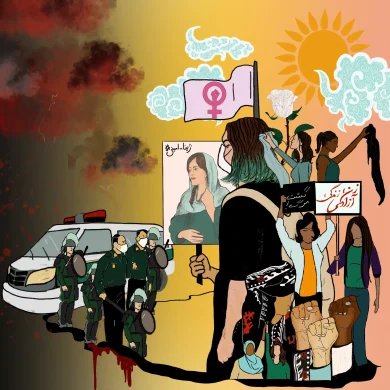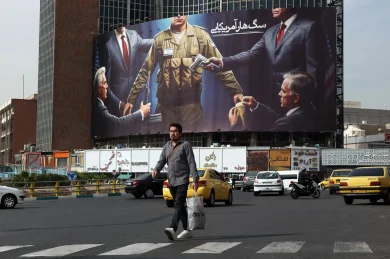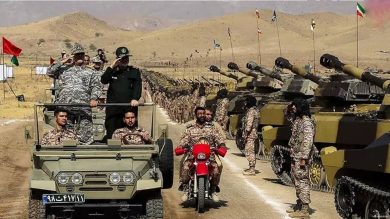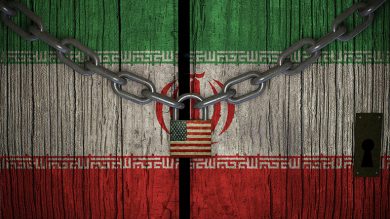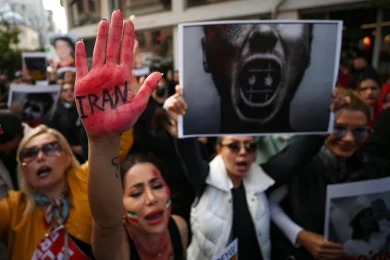The Islamic Revolutionary Guard Corps (IRGC) is not just a military institution within the Islamic Republic of Iran; it is the central pillar of authoritarian control, responsible for internal suppression, regional aggression, and the enforcement of ideological loyalty. Formed in the wake of the 1979 revolution, the IRGC has evolved into a multifaceted institution with vast influence over Iran’s politics, economy, judiciary, intelligence, media, and military operations.
This article takes an in-depth look at how the IRGC maintains control through power consolidation, systemic fear, and widespread repression, both domestically and internationally.
1. The Birth and Expansion of the IRGC
The IRGC was established to protect the revolution, serving as a counterbalance to the regular military and a tool for theocratic governance. Unlike traditional armed forces, it was ideologically charged from the outset.
Key Functions Early On:
• Eliminate opposition to Ayatollah Khomeini’s rule.
• Crush leftist, liberal, and nationalist forces.
• Enforce Islamic codes and revolutionary values.
By the late 1980s, the IRGC had entrenched itself in nearly all state functions. Over time, it became a military-industrial-political-intelligence empire.
2. Power Through Fear: The IRGC’s Domestic Role
A. Intelligence and Surveillance
The IRGC’s Intelligence Organization acts as the regime’s secret police, tracking activists, journalists, university students, and political opponents. Its tactics include:
• Wiretapping and online monitoring.
• Arbitrary arrests and disappearances.
• Use of informants within civil society and academia.
B. Controlling Protests
From the Green Movement of 2009 to the Women, Life, Freedom protests of 2022, the IRGC and its Basij militia have violently suppressed demonstrations:
• Firing on unarmed crowds.
• Torturing detainees, including minors.
• Imposing collective punishments in Kurdish and Baloch areas.
The goal: make dissent synonymous with danger.
3. The Economic Empire of the IRGC
Beyond military and intelligence, the IRGC controls a massive portion of Iran’s economy, primarily through its financial arm, Khatam al-Anbia Construction Headquarters, and other shell companies.
Key Economic Roles:
• Infrastructure and oil contracts.
• Control over black-market imports and border smuggling.
• Influence in banking, telecom, and mining sectors.
Profits from these ventures fund repression and allow the IRGC to operate independently of public accountability.
4. Regional Aggression and Global Terrorism
The IRGC’s Quds Force—its elite foreign operations unit—has been directly involved in:
• Supporting proxy militias in Lebanon (Hezbollah), Iraq, Syria, and Yemen.
• Attacks on U.S. and allied forces across the Middle East.
• Training and arming non-state actors designated as terrorist groups by Western nations.
This international activity has led to the IRGC being designated as a terrorist organization by the United States, Bahrain, Saudi Arabia, and others.
5. Media and Information Warfare
The IRGC runs an extensive propaganda machine:
• Controls state-run media outlets like IRIB.
• Operates troll farms and cyber units to spread disinformation.
• Forces political prisoners into televised confessions to shape public opinion.
This media control is vital for promoting the narrative that the regime is under siege by foreign enemies and that dissent is treason.
6. The Role of the Basij: A Tool of Fear
The Basij militia, under IRGC command, is deployed in schools, universities, factories, and neighborhoods. These “volunteer” forces act as:
• Cultural enforcers of Islamic morality.
• Spies and informants against suspected activists.
• Street enforcers during protests and elections.
The omnipresence of the Basij helps the regime maintain an atmosphere of constant surveillance.
7. Gender-Based Repression: Controlling Iranian Women
The IRGC plays a direct role in enforcing gender norms, especially through:
• Arresting women for “improper hijab”.
• Violently suppressing women-led protests.
• Censoring media that portrays independent women.
Its methods include public humiliation, detentions, and sexual violence in custody, all aimed at deterring resistance among women—a group that continues to be at the forefront of the struggle for change.
8. Digital Warfare and Cyber Repression
The IRGC has become a cyber superpower inside Iran:
• Blocks platforms like Twitter, YouTube, and Telegram.
• Uses malware and phishing attacks to target journalists and activists.
• Shuts down internet access during protests to isolate movements.
These tactics help prevent the spread of protest footage, coordination among activists, and international exposure.
9. The Human Cost: Voices from Inside Iran
Testimonies from former prisoners, activists, and journalists reveal:
• Torture, including physical beatings, rape, and psychological abuse.
• Solitary confinement lasting months.
• Threats against family members, including children.
The IRGC’s system of repression operates with impunity, protected by state propaganda and a loyal judiciary.
10. What the International Community Can Do
To confront the IRGC’s grip on Iran, the world must act:
A. Expand Terrorist Designation
More countries should officially designate the IRGC as a terrorist organization, restricting its global finances and movement.
B. Impose Sanctions on IRGC-Owned Firms
Target the economic networks that fund repression.
C. Support Digital Freedom Tools
Provide Iranians with VPNs, encrypted messaging apps, and access to uncensored information.
D. Center Iranian Civil Society
Listen to Iranian activists, women, and youth—they are the real opposition.
Conclusion: Power Maintained by Fear Will Crumble
The IRGC thrives on fear, but fear is losing its grip. Iranians—especially women and youth—are no longer afraid. They are speaking out, risking everything, and calling on the world to listen.
Join Our Newsletter!
Stay informed with the latest updates, news, and ways to take action in the fight for justice and global security. Sign up now to get updates delivered straight to your inbox!

